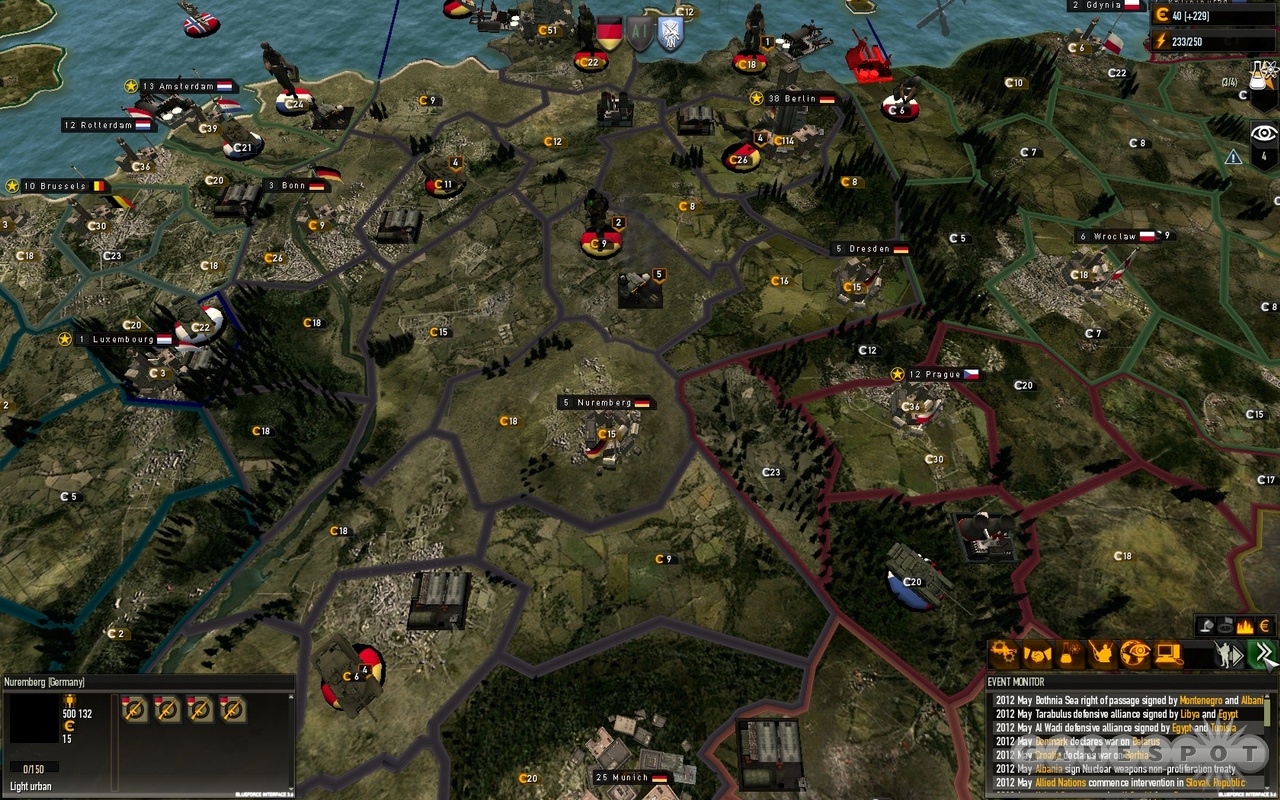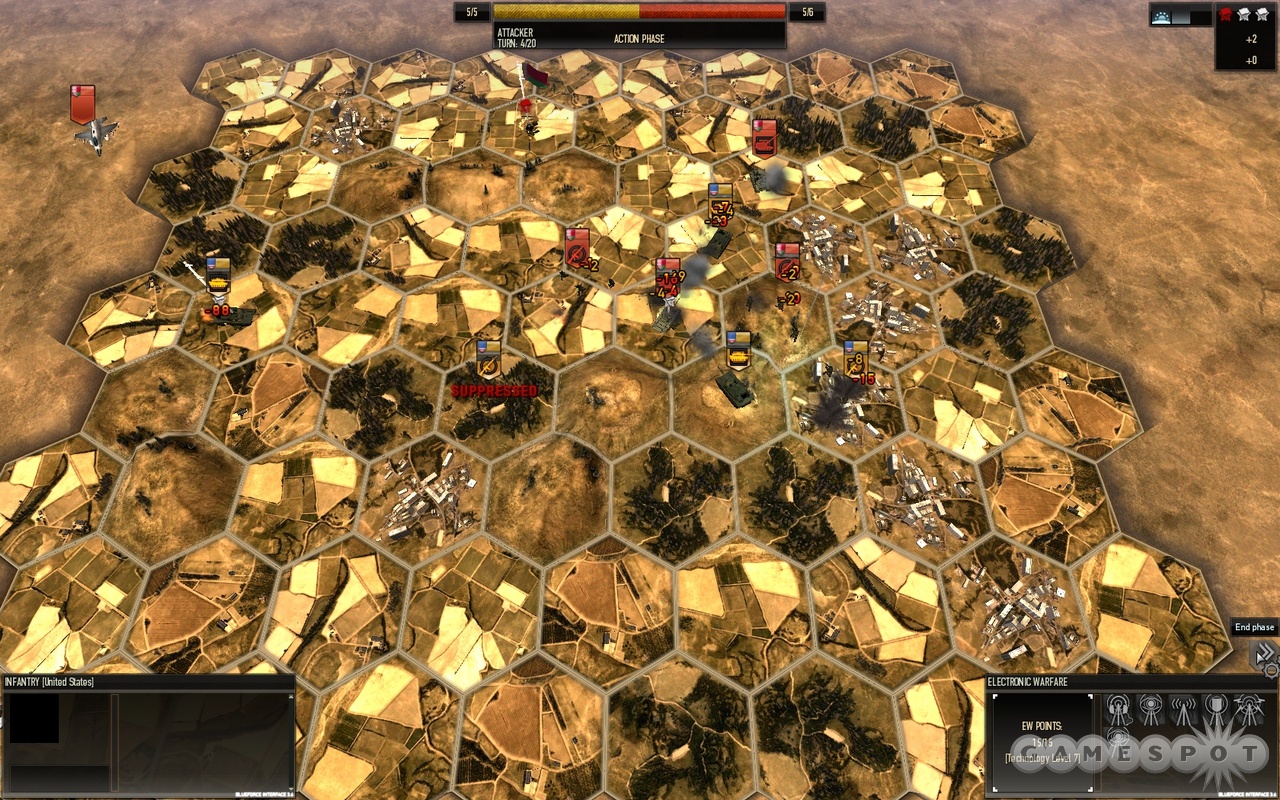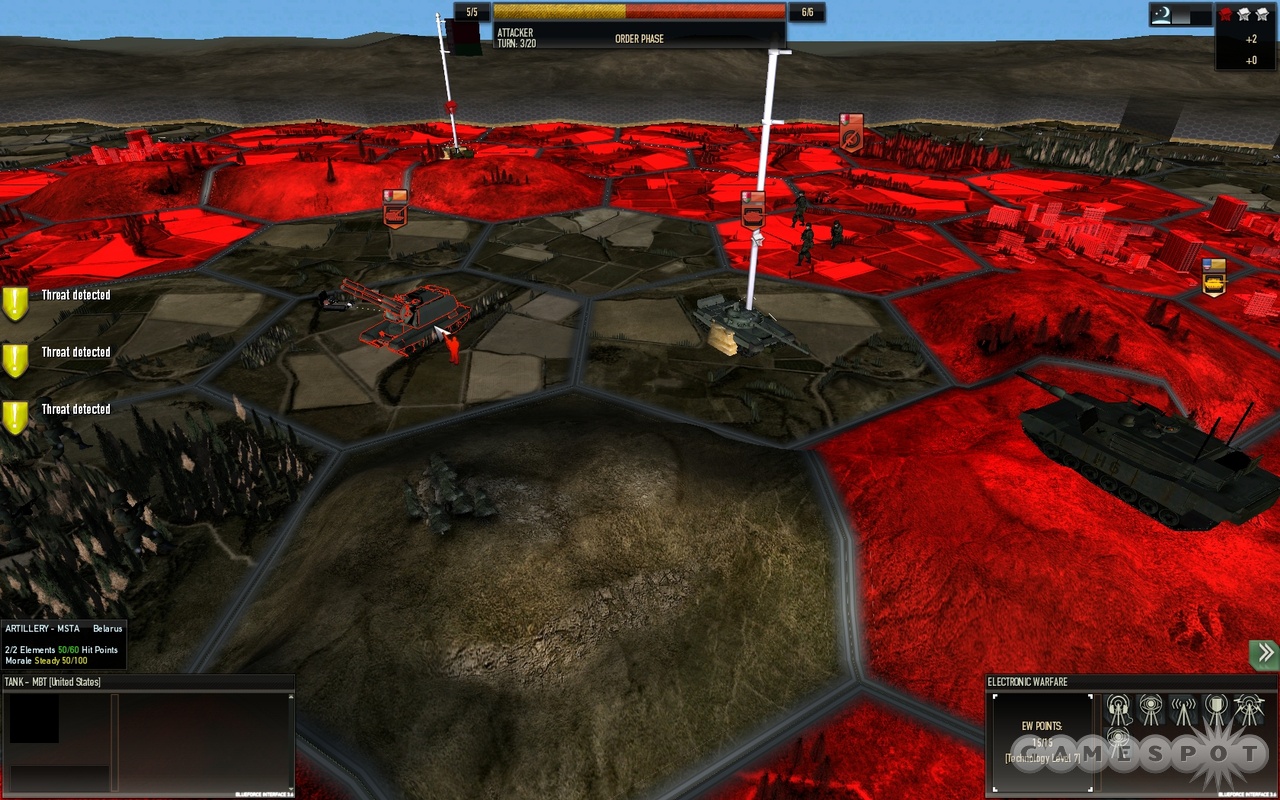Storm: Frontline Nation is smack-dab in the middle. Colossai Studios' turn-based strategy game occupies the neutral zone between encyclopedic franchises such as Hearts of Iron and mainstream fare such as the Civilization series. But this captivating saga about an all-out global war in the near future is anything but a middling effort. A tremendous amount of depth and replay value are the big positives here, along with aggressive enemy artificial intelligence that turns every campaign into a war for survival.

Anyone who has experience with voluminous games of grand historical strategy, such as Europa Universalis, Hearts of Iron, and Victoria, will immediately know what Storm has in store for you. The main difference here is the time frame. Where those games deal with history, Storm: Frontline Nation deals with the very near future. It is January of 2012, immediately following a war that has caused oil exports from the Middle East to be virtually shut down. As a result, economies have collapsed, and big players in the USA, UK, France, Russia, and Germany are fighting over the scraps, namely oil resources in places like the North Sea and North Africa. The story campaign takes place in Europe and North Africa, where you take control of one of the big five nations noted above and deal with hundreds of conquerable provinces and cities. Victory conditions involve everything from building up an army, to sending a spy to steal research from an enemy capital, to simply building facilities like naval bases.
You can also forgo the story and go for the open campaign. This option features some 45 nations, including all of the smaller nations in the region, such as Spain, Egypt, Greece, Austria, Slovenia, and so forth. You get a ton of replay value, because every country comes with a unique range of pluses and minuses. Running Greece, for instance, is a whole lot different from running the US, so moving down requires big changes in how you conduct yourself with neighbors. Situations where you might want to throw your weight around tend not to work out so well if you have only a tiny military and not a whole lot of cash at your disposal. Some of the playable countries seem ridiculous, though. Taking over countries like Montenegro, Morocco, and Estonia is nearly pointless, because they just don't have enough power or territory (although having just two territories to look after sure does cut down on the management duties) to provide an interesting game. Choose one of them, and you're generally stuck either trying to survive onslaughts from bigger enemies or staving off boredom while watching the big guys go at it for black gold.
In campaigns, you play as the leader of an entire nation in a far-reaching game of geopolitical conquest. On the main map screen, you guide the fortunes of your country through turns that last a month of real time. This is where everything begins. Here you declare war on the Swedes, produce conventional units like tanks and planes, sneakily order up weapons of mass destruction like nukes and biological weapons, stage covert ops like assassinations, ink treaties with those nice guys in Russia, advance research levels to gain nifty new weapons, and so forth. While the sheer number of things to do is impressive, most of the options are somewhat scaled back from those in other grand strategy games. There is no massive, varied cultural tech tree as in the Civilization games, for instance. All of the tech levels earned generally just open up bigger and better ways to kill enemies, like suitcase nukes and bioweapons such as anthrax and smallpox.

The options stop well short of kitchen-sink territory. At the same time, this doesn't quite make Storm more manageable than many of its genre predecessors, largely due to a terrible tutorial system of blurry videos that walk you through the interface and some strategic and tactical features. Fully interactive tutorials would have made a big difference. Visual quality is dark and murky as well, making it hard to tell units apart at times. Audio is equally unhelpful, including a musical score that sounds like something heard over the closing credits of a straight-to-DVD action flick, and repetitive unit acknowledgements that consist of nothing but the unit name, often mispronounced. Still, at least the interface is intuitive for the most part. You have to fiddle around at times (uh, how do you build a nuclear research facility again?), although generally you can work things out in no more than a few minutes of experimentation. Story mode also provides many missions that serve as guideposts pushing you in the right direction when it comes to building your navy for eventual North Sea attacks or getting a spy over to the UK to see what it's up to, for example.
There isn't a whole lot of time to hang out micromanaging anyhow, so it's a good thing you can find your way around in short order. Nations are extremely aggressive. Multiple wars seem to always kick off by February 2012, the second turn of the game. This keeps you on your toes and lets you know that you can't sit back and play statesman. It gives the game sort of a Risk vibe. But at the same time, it's hard to make sense of what's happening. There are a lot of head-scratchers here. Slovenia annihilates Hungary for reasons unknown. Ukraine declares war on the Slovak Republic. Greece attacks everybody. The US invades Tunisia. Lithuania signs a biological nonproliferation treaty. Campaigns seem to always turn into massive free-for-all brawls where you never know who is going to align with whom. There are always a good dozen or two treaties on the go, featuring defensive alliances between odd bedfellows like the US and Montenegro or Egypt and Russia. It's all cool and chaotic, in that you never know what's going to happen next. It's also pretty much senseless. So if you're looking for a game to mirror what you read in Foreign Affairs every month, keep looking.

When the bullets start flying, the action shifts to a turn-based combat screen where nations handle diplomacy the old-fashioned way. You guide units into battle on hex-based grids overlaying photo-realistic maps with enough details regarding terrain, weather, supply lines, and the like to satiate all but the most demanding wargamer. Battles are fairly small-scale, with just a handful of units per side in the field at any given moment. Turns take place simultaneously, not consecutively. So lining up enemy infantry for a bombing run might be foiled by the bad guys simply moving out of the way. Enemy AI is quite astute, with your opposition knowing how to defend the three control points per map that you need to seize to declare victory. They often grab high ground, for instance. You can skip battles and have the computer resolve them automatically, but it's not a good idea since the scraps generally turn out poorly for you.
In addition to the campaigns, you can fire up one-off customizable skirmishes. These scraps aren't as interesting on their lonesome without the arching national plots linking everything together, although the tactical depth can carry you through battles for a time. The one-offs can offer a lot if you fancy yourself more of a general than a prime minister. Multiplayer options are available for both game types, as well. All of the multiplayer is handled through direct IP links and local LANs, however, which makes it awfully tough to line up opponents.

Although Storm: Frontline Nation does not fit into an easily defined category for those looking to classify the game as either a hardcore geopolitical sim or a lightweight, board-game-style effort, this is still a good game. The solid design, smart AI, and frenetic combat can keep you fighting and refighting World War III for many hours. The audio and visual presentation is dated, and the lack of a good hands-on tutorial that steps you through the many intricacies of the interface and rules is unfortunate. But even with these drawbacks, this is a game that tests your tactical abilities and has so many options when it comes to choosing nations to play that the replay value is nearly limitless.